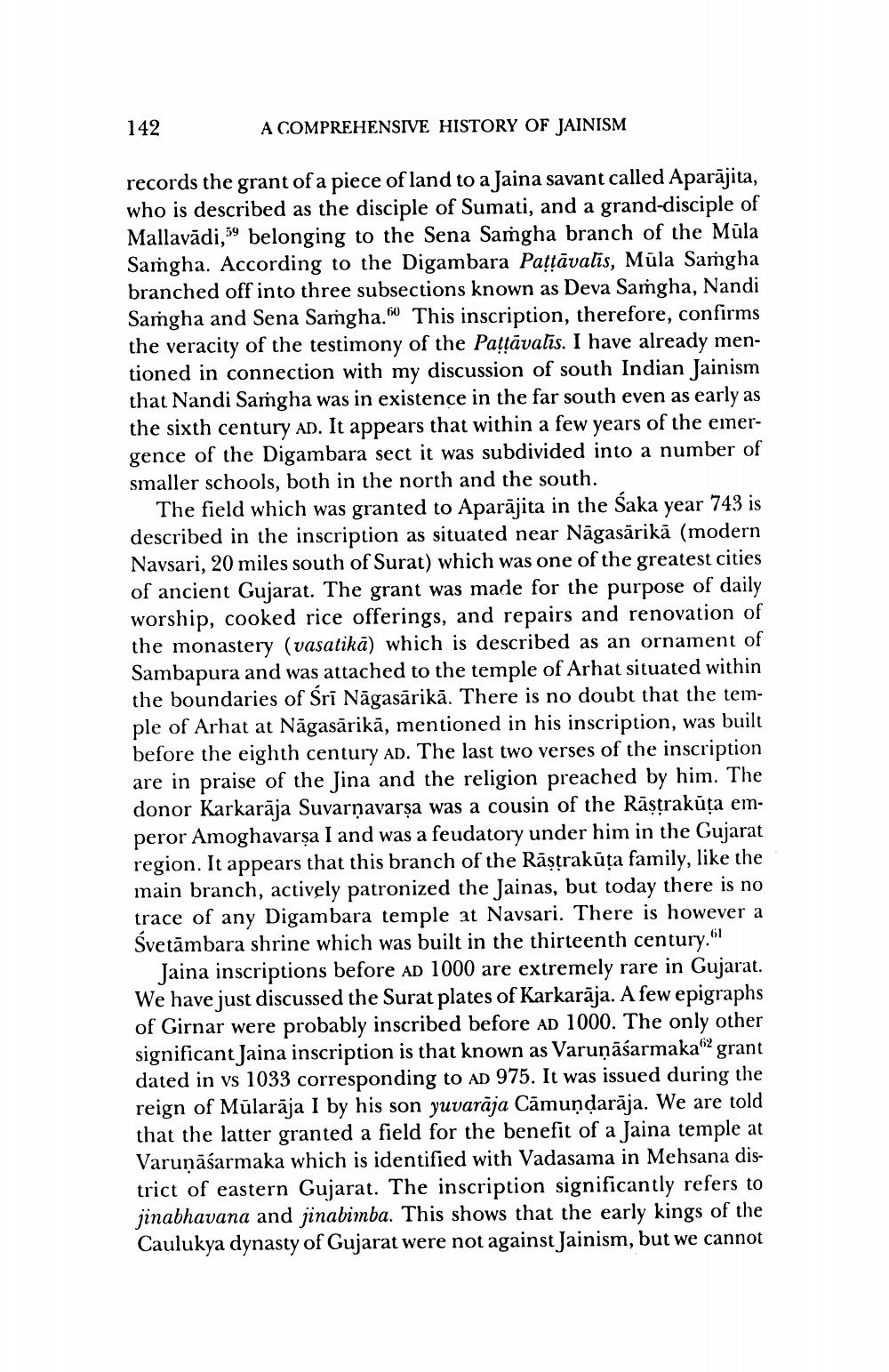________________
A COMPREHENSIVE HISTORY OF JAINISM
59
records the grant of a piece of land to a Jaina savant called Aparajita, who is described as the disciple of Sumati, and a grand-disciple of Mallavādi, belonging to the Sena Samgha branch of the Müla Samgha. According to the Digambara Paṭṭāvalis, Müla Samgha branched off into three subsections known as Deva Samgha, Nandi Samgha and Sena Samgha. This inscription, therefore, confirms the veracity of the testimony of the Paṭṭāvalis. I have already mentioned in connection with my discussion of south Indian Jainism that Nandi Samgha was in existence in the far south even as early as the sixth century AD. It appears that within a few years of the emergence of the Digambara sect it was subdivided into a number of smaller schools, both in the north and the south.
The field which was granted to Aparajita in the Śaka year 743 is described in the inscription as situated near Nāgasārikā (modern Navsari, 20 miles south of Surat) which was one of the greatest cities of ancient Gujarat. The grant was made for the purpose of daily worship, cooked rice offerings, and repairs and renovation of the monastery (vasatikā) which is described as an ornament of Sambapura and was attached to the temple of Arhat situated within the boundaries of Śrī Nāgasārikā. There is no doubt that the temple of Arhat at Nāgasārikā, mentioned in his inscription, was built before the eighth century AD. The last two verses of the inscription are in praise of the Jina and the religion preached by him. The donor Karkarāja Suvarnavarṣa was a cousin of the Raṣṭrakūta emperor Amoghavarṣa I and was a feudatory under him in the Gujarat region. It appears that this branch of the Raṣṭrakūta family, like the main branch, actively patronized the Jainas, but today there is no trace of any Digambara temple at Navsari. There is however a Śvetämbara shrine which was built in the thirteenth century."
142
Jaina inscriptions before AD 1000 are extremely rare in Gujarat. We have just discussed the Surat plates of Karkarāja. A few epigraphs of Girnar were probably inscribed before AD 1000. The only other significant Jaina inscription is that known as Varuṇāśarmaka grant dated in vs 1033 corresponding to AD 975. It was issued during the reign of Mūlarāja I by his son yuvaraja Camuṇḍarāja. We are told that the latter granted a field for the benefit of a Jaina temple at Varuṇāśarmaka which is identified with Vadasama in Mehsana district of eastern Gujarat. The inscription significantly refers to jinabhavana and jinabimba. This shows that the early kings of the Caulukya dynasty of Gujarat were not against Jainism, but we cannot




